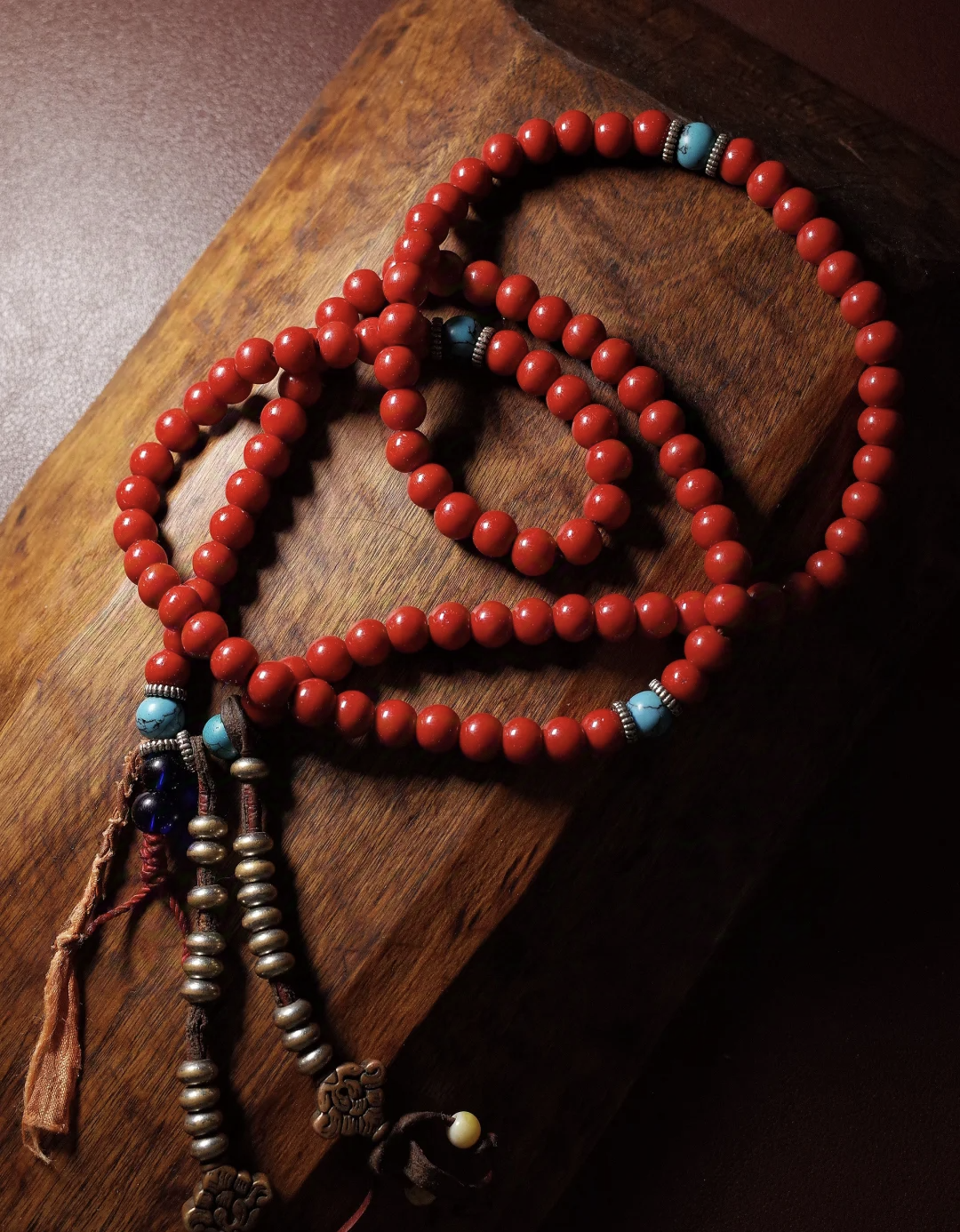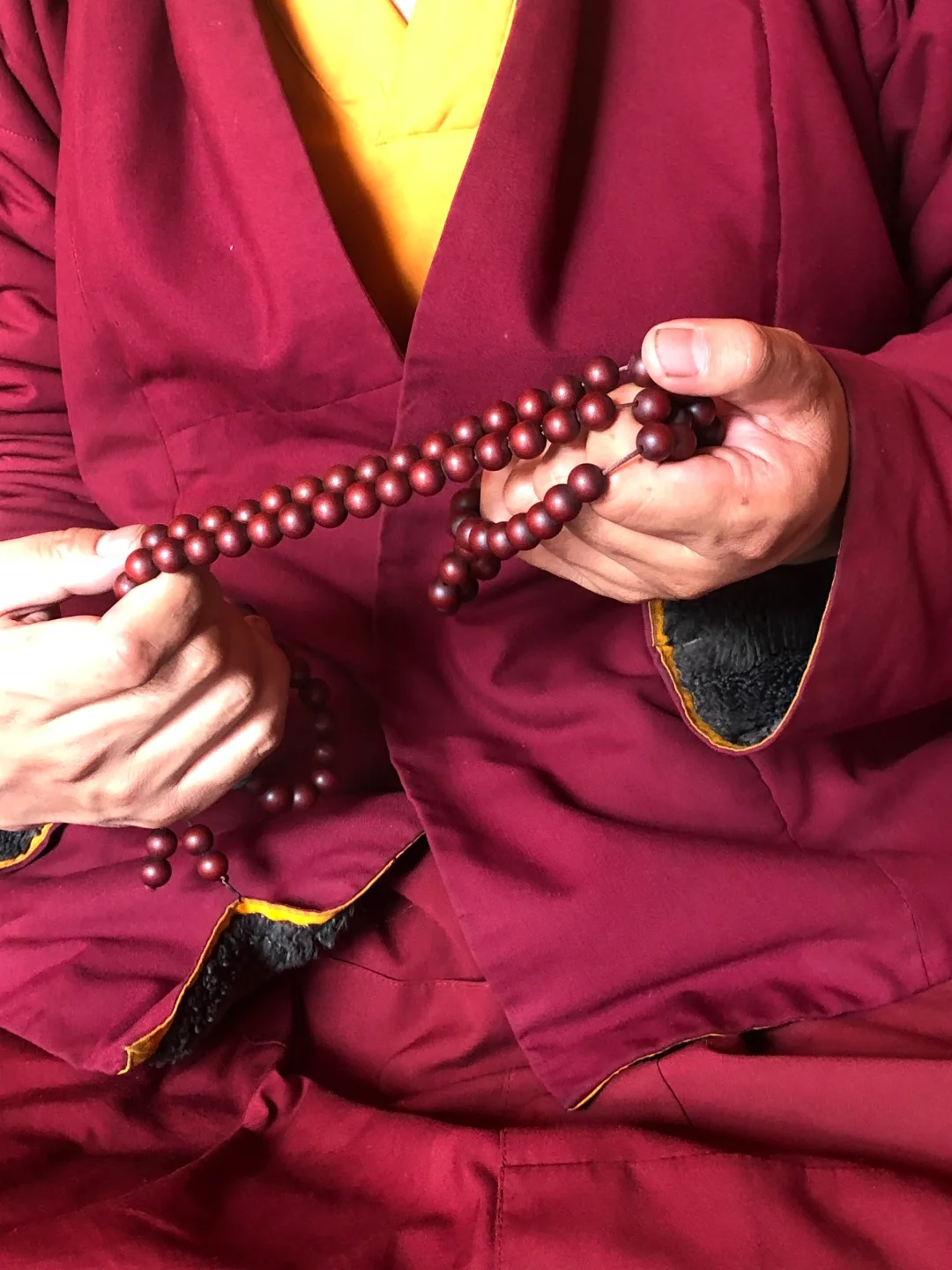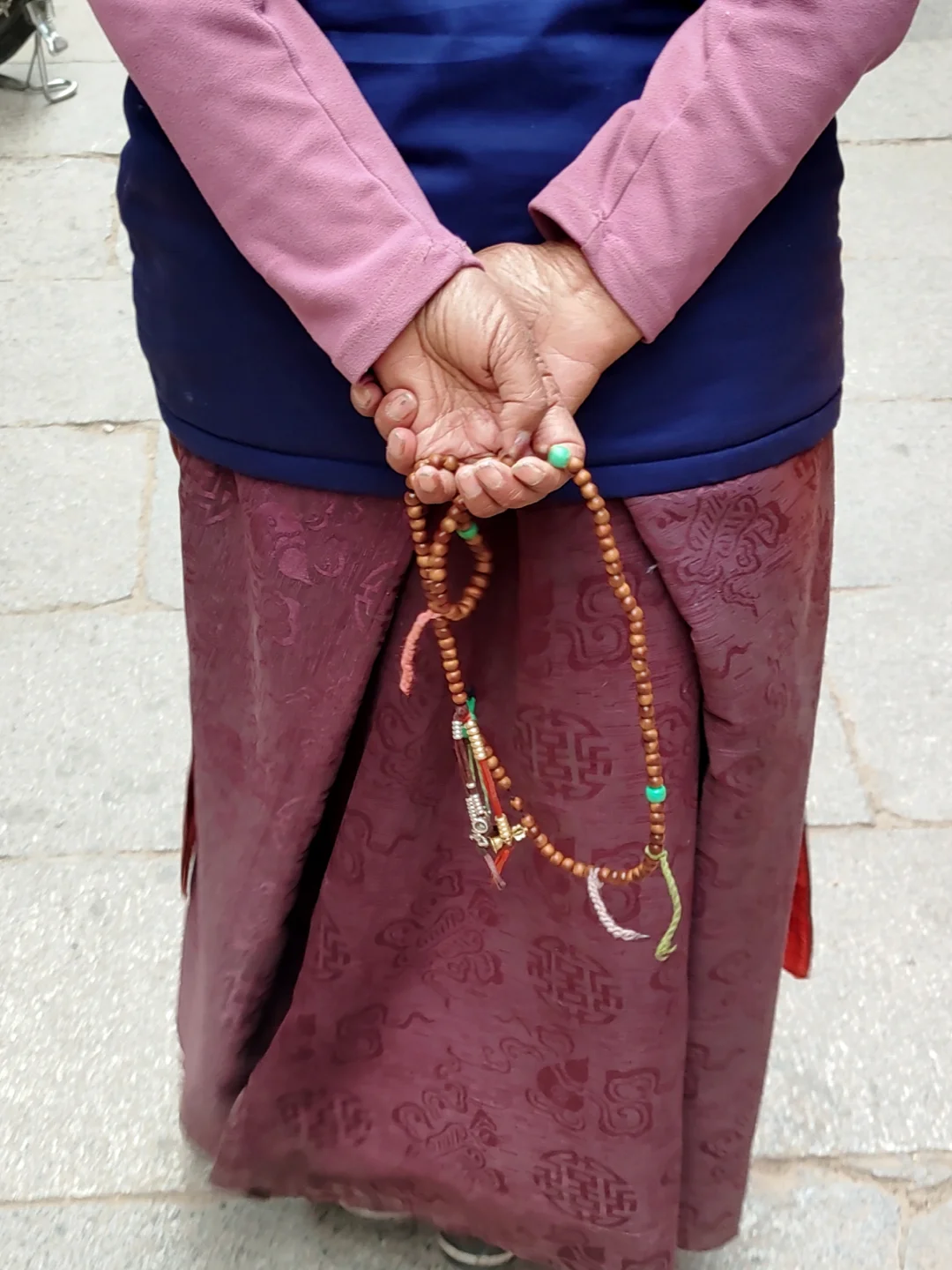The Secret of Tibetan Buddhism - Rosary
In the Tibetan Buddhist practice system, mala beads are not just tools for counting mantras; they are sacred objects rich with symbolic meaning. Their significance goes far beyond the typical religious rituals—they represent spiritual connection, mental purification, and the accumulation of merit.
1. Historical Origins of Mala Beads
The use of mala beads in Buddhism has a long history, dating back to early Buddhist periods in ancient India. During the time of the Buddha, mala beads were widely used to help practitioners maintain the rhythm and count the number of mantras recited. After Indian Tantric Buddhism was introduced to Tibet, the use of mala beads further evolved and integrated with the unique practices of Tibetan Buddhism, becoming an essential tool in daily practice. Over time, mala beads have become one of the most common spiritual tools for Tibetan Buddhists, developing into various types for different purposes.
2. Symbolism of Mala Beads
The 108 beads on a traditional mala symbolize the 108 kinds of afflictions, or they may represent the 108 stages of practice in Buddhist teachings. By using mala beads, practitioners can gradually overcome these obstacles, moving toward enlightenment. Additionally, mala beads help practitioners focus their minds, resist distractions, and maintain a peaceful state during mantra recitation or meditation.
In addition to the 108 beads, malas often include a guru bead, symbolizing the teacher or Buddha. This bead reminds practitioners to show respect and devotion to their guru. The guru bead also represents the beginning and end of a cycle of mantra recitation, and practitioners skip over this bead as a sign of reverence.
3. Materials of Mala Beads
In Tibetan Buddhism, mala beads can be made from various materials, each carrying distinct spiritual significance and benefits:
- Sandalwood: Known for bringing peace and calmness, sandalwood is often used in meditation and spiritual practices.
- Bodhi Seed: Symbolizing enlightenment, these beads are made from the seeds of the Bodhi tree, under which the Buddha attained enlightenment.
- Crystal: Representing purity and clarity of mind, crystal malas are suitable for removing mental afflictions and enhancing inner wisdom.
- Bone Beads: Made from animal or human bones, these beads symbolize impermanence, reminding practitioners of life’s transience and encouraging them to cherish time and deepen their practice.
The choice of material not only affects the spiritual significance of the mala but can also be selected based on the specific purposes of the practice. For example, certain materials may be used when reciting particular mantras to enhance the practice's effectiveness.
4. Different Types of Malas and Their Uses
In Tibetan Buddhism, different types of malas serve different purposes, depending on the specific practice or ritual. Apart from the common 108-bead mala, there are other types specifically designed for unique practices:
- 27-bead malas: Suitable for quick mantra recitations during short periods, often used for specific brief rituals.
- 21-bead malas: Typically used for shorter mantras or more intensive practices, allowing practitioners to complete a full round of mantra recitation more swiftly.
- Merit malas: These malas are often blessed and carry special religious significance, typically used in important religious ceremonies or personal practices.
Different numbers of beads allow practitioners to adjust the time and frequency of their mantra recitations flexibly. Additionally, practitioners may choose different materials and sizes of mala beads according to their specific spiritual needs, thereby enhancing the effects of their practice.
5. The Role of Mala Beads Beyond Counting
Although the basic function of mala beads is to help practitioners count mantras, their spiritual significance is far deeper than simple counting. Mala beads aid in focusing attention, preventing distractions during long practice sessions. The repetitive motion of rolling the beads can also create a rhythmic pattern, synchronizing the practitioner's breath, heartbeat, and mantra recitation, leading to a calmer meditative state. The interaction between mala beads and the fingers brings the body, mind, and spirit into harmony, creating a holistic inner and outer experience.
For practitioners, mala beads are not just external tools but also symbols of inner spiritual progress. Each bead represents an incremental step in practice, symbolizing the practitioner's gradual liberation from afflictions and karma, ultimately leading to enlightenment and wisdom.
6. Relationship Between Mala Beads and Mantras
In Tibetan Buddhism, the recitation of mantras is a vital practice, and mala beads are closely associated with mantras. Each bead represents the power of the mantra. The most commonly recited mantra is the six-syllable mantra of Avalokiteshvara, "Om Mani Padme Hum." When practitioners recite this mantra, they use the mala to count each repetition, helping to stay mindful of the practice. Through the use of mala beads, the mantra's power not only purifies the practitioner's karma but also brings blessings of wisdom and compassion.
In addition to the six-syllable mantra, other frequently recited mantras include Manjushri's wisdom mantra, Green Tara's mantra, and the mantras of various other deities and protector spirits. Each mantra has its specific function, and the use of mala beads helps practitioners focus on the recitation of these mantras.
7. Transmission and Blessing of Mala Beads
In Tibetan Buddhism, mala beads hold an important place in the lineage of spiritual transmission. High-ranking lamas or teachers may bless and pass on mala beads to their disciples as symbols of spiritual connection. This transmission not only represents the religious bond between the teacher and disciple but also carries deep spiritual meaning. Blessed mala beads are often considered sacred objects with the power to purify the mind and strengthen practice.
After a mala has been blessed by a teacher, it is believed to possess special merit and power. Practitioners who use blessed mala beads often feel a stronger spiritual connection and benefit from the energy it brings. Blessed malas are frequently used for prayers, protection, and meditation in daily life.
8. Merit Accumulation Through Mala Beads
Using mala beads to recite mantras is not just a form of practice; it is also believed to accumulate immense merit. Each time a practitioner moves a bead and recites a mantra, they are not only chanting but also purifying their mind, removing negative karma, and receiving blessings. The counting function of the mala serves as a reminder of the practitioner's progress and the importance of concentration in practice.
Additionally, mala beads are tools for mental purification. As practitioners continuously repeat mantras and interact with the beads, their minds become more peaceful, and inner distractions gradually fade away, allowing them to connect more deeply with the Dharma.
9. Mala Beads in Tibetan Culture
Mala beads are not only religious tools but also an integral part of Tibetan culture. In everyday life, Tibetans often carry mala beads in their hands, reciting mantras as they work, walk, or rest. This habit reflects both individual spiritual practice and deep devotion to the Dharma. In Tibetan markets, streets, and temples, people can be seen holding mala beads, continuously reciting mantras.
Mala beads are also frequently given as gifts, symbolizing blessings and good wishes. Especially during the Tibetan New Year or religious festivals, gifting mala beads is a traditional way to show respect and offer blessings. Mala beads that have been blessed hold even greater significance and are often cherished as sacred relics.
Finally
The significance of mala beads in Tibetan Buddhism goes far beyond their role as counting tools. They help practitioners focus on mantra recitation and serve as bridges between practitioners and the Dharma, carrying profound religious symbolism and spiritual meaning. Through the use of mala beads, practitioners can gradually accumulate merit, purify body and mind, and ultimately move toward enlightenment and liberation. As an essential part of Tibetan Buddhist culture, mala beads also reflect the Tibetan people's deep faith in the Dharma and their pursuit of spiritual wisdom.
At Buddha Purify, we are committed to using Tibetan culture as the foundation to deepen our understanding of spiritual practices and bring them to a broader audience. Our mission is to expand awareness about Tibetan spiritual artifacts and practices, offering insights into how these ancient traditions can enhance modern lives.
We focus on a wide range of products that reflect the profound elements of Tibetan spirituality. Our collection includes Buddhist beads, Buddha pendants, and spiritual jewelry, each designed to assist with meditation, spiritual cleansing, and mindfulness. These items are more than mere accessories—they are integral tools for spiritual growth, helping individuals achieve karma balancing and energy purification.
By emphasizing the Tibetan Zen lifestyle and its connection to holistic wellness, we aim to share the transformative power of these practices. Our meditation accessories and mindfulness products are crafted to support users in their journey towards spiritual enlightenment, promoting a deeper understanding of themselves and their path.
Buddha Purify is not just about offering products; it's about creating a bridge between Tibetan traditions and contemporary spiritual needs. We strive to foster a greater appreciation of Tibetan culture's spiritual depth and cultural richness. Through our efforts, we hope to inspire individuals around the world to embrace a conscious way of living, enriched by the wisdom and practices of Tibetan Buddhism.






